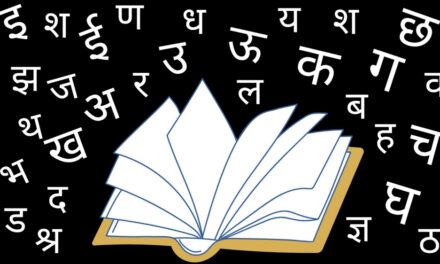Grasping the nuanced landscape of state-specific electricity pricing in India is indispensable for households, industries, and commerce alike. With energy expenditures forming a significant portion of operational overhead, having precise awareness of the 2025 power tariffs empowers better fiscal planning and judicious resource distribution. Herein unfolds an exhaustive, meticulously updated compendium of the current electricity rates spanning domestic, commercial, and industrial domains.
Demystifying Electricity Tariff Per Unit in India
The electricity tariff per unit signifies the levy imposed upon consumers for expending a single kilowatt-hour (kWh) of electricity. This charge fluctuates contingent upon several parameters:
- State jurisdiction
- Consumer classification (Residential, Commercial, Industrial)
- Consumption slabs
- Chronological usage patterns (in select territories)
The Indian tariff edifice is orchestrated under the aegis of respective State Electricity Regulatory Commissions (SERCs), thus engendering heterogeneous pricing frameworks across the subcontinent.
Residential Electricity Tariffs – Dissected by State (2025)
Below is a curated ledger elucidating prevailing domestic electricity charges across India’s principal states:
| State | Tariff Range (₹/Unit) | Slab Nuances |
| Delhi | ₹3.00 – ₹8.00 | 0–200 units: ₹3.00, 201–400: ₹5.50, 400+: ₹8.00 |
| Maharashtra | ₹3.50 – ₹10.20 | 0–100: ₹3.50, 101–300: ₹6.25, 301–500: ₹9.00, 500+: ₹10.20 |
| Tamil Nadu | ₹2.85 – ₹8.65 | 0–100: ₹2.85, 101–200: ₹4.95, 200+: ₹8.65 |
| Uttar Pradesh | ₹3.35 – ₹7.80 | 0–150: ₹3.35, 151–300: ₹6.00, 300+: ₹7.80 |
| Karnataka | ₹4.15 – ₹7.60 | Up to 50: ₹4.15, 51–200: ₹6.20, 200+: ₹7.60 |
| Kerala | ₹3.15 – ₹8.45 | 0–100: ₹3.15, 101–250: ₹6.35, 250+: ₹8.45 |
| West Bengal | ₹3.00 – ₹7.00 | 0–102: ₹3.00, 103–300: ₹5.60, 300+: ₹7.00 |
| Gujarat | ₹3.20 – ₹7.95 | 0–100: ₹3.20, 101–250: ₹5.60, 251+: ₹7.95 |
| Rajasthan | ₹3.15 – ₹8.00 | 0–100: ₹3.15, 101–300: ₹5.85, 301+: ₹8.00 |
| Punjab | ₹3.25 – ₹7.20 | Subsidised up to 300 units: ₹3.25, Beyond 300: ₹7.20 |
Nota Bene: Tariffs are often bifurcated between metropolitan and rural precincts, and fluctuate depending on connection archetype and metering mechanisms.
Commercial Electricity Tariffs – State Variations (2025)
Enterprise establishments and retail ventures are subject to distinct electricity levies vis-à-vis residential consumers. The tableau below captures the contemporary commercial rates:
| State | Commercial Tariff (₹/Unit) |
| Delhi | ₹7.75 – ₹10.00 |
| Maharashtra | ₹8.50 – ₹12.00 |
| Tamil Nadu | ₹7.95 – ₹10.25 |
| Uttar Pradesh | ₹7.50 – ₹9.80 |
| Karnataka | ₹7.20 – ₹9.50 |
| Kerala | ₹6.90 – ₹10.00 |
| Gujarat | ₹6.85 – ₹9.20 |
| West Bengal | ₹7.00 – ₹9.50 |
| Rajasthan | ₹7.30 – ₹10.50 |
| Punjab | ₹6.75 – ₹9.00 |
Industrial Electricity Tariffs – Across the States (2025)
Heavy industries and manufacturing giants encounter differentiated tariff schemas based on whether they draw High Tension (HT) or Low Tension (LT) currents:
| State | Industrial Tariff (₹/Unit) |
| Delhi | ₹6.80 – ₹9.40 |
| Maharashtra | ₹7.30 – ₹10.90 |
| Tamil Nadu | ₹6.70 – ₹9.25 |
| Uttar Pradesh | ₹6.60 – ₹9.10 |
| Karnataka | ₹6.20 – ₹8.95 |
| Gujarat | ₹6.55 – ₹9.00 |
| West Bengal | ₹6.80 – ₹9.20 |
| Kerala | ₹6.10 – ₹8.70 |
| Rajasthan | ₹6.75 – ₹9.50 |
| Punjab | ₹6.40 – ₹8.95 |
Electricity Subsidies and Complementary Units: Statewise Snapshot (2025)
A handful of states offer generous subsidies or gratuitous units to particular consumer categories:
- Delhi: Complimentary supply up to 200 units for residential patrons.
- Punjab: Monthly grant of the first 300 units at zero cost.
- Tamil Nadu: 100 units rendered gratis for household connections.
- Rajasthan: Free provision up to 100 units for economically vulnerable strata.
These largesse initiatives are orchestrated under state-driven welfare blueprints and are susceptible to periodic recalibrations.
Determinants Sculpting Electricity Pricing in India
Several factors influence the terminal cost per kilowatt-hour:
- Fuel Sourcing Costs: Dependence on coal, gas, and hydroelectricity tailors the generation expenditures.
- Transmission and Distribution Attrition: Elevated line losses necessitate higher end-user charges.
- State-Sponsored Subsidies: Governments underwrite segments of costs to shelter select demographics.
- Power Procurement Accords: Tariffs are sculpted through negotiated settlements with electricity producers.
- Renewable Energy Influx: Jurisdictions embracing solar and wind paradigms experience tariff modulations.
Ingenious Stratagems to Curtail Electricity Expenditure
- Opt for Energy-Miser Appliances: Transition to 5-star rated appliances.
- Harness Solar Potency: Install photovoltaic arrays and capitalise on net metering incentives.
- Deploy Smart Meters: Maintain vigilant oversight on live consumption metrics.
- Exterminate Standby Drainage: Sever power to dormant devices.
- Exploit Subsidy Windows: Avail oneself of government-facilitated rebate and relief schemes.
Forecast: The Horizon of Electricity Tariffs in India
Anticipate a metamorphosis towards stabilised and foresight-driven electricity tariffs buoyed by:
- Escalated infusion of renewable energy portfolios
- Proliferation of smart grids and storage infrastructures
- Emergence of dynamic, time-sensitive tariff modules
- Escalated thrust on the demand-side energy stewardship
- De-escalation in fossil fuel dependency
Trailblazers like Gujarat, Tamil Nadu, and Rajasthan are championing the renaissance towards greener grids, promising potentially alleviated tariffs for conscientious consumers over the ensuing decade.
Closing Reflections
Electricity tariffs across India weave a complex tapestry, heavily influenced by regional stratagems, infrastructural capacities, and resource endowments. Astute vigilance of evolving state-wise tariffs empowers citizens and businesses to economise on energy, amplify efficiency, and anchor stronger financial fortitude. For canonical and up-to-the-minute tariff specifics, consultation with your State Electricity Board’s digital portal or the formal SERC tariff edict is advised.
Also Read: India : A Land of Diversity, Heritage, and Innovation










